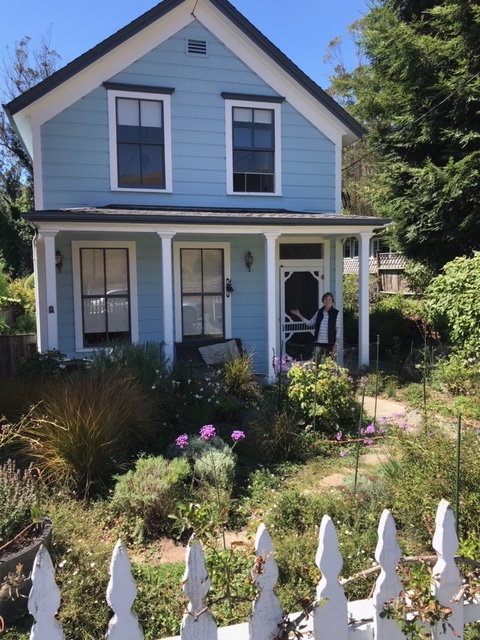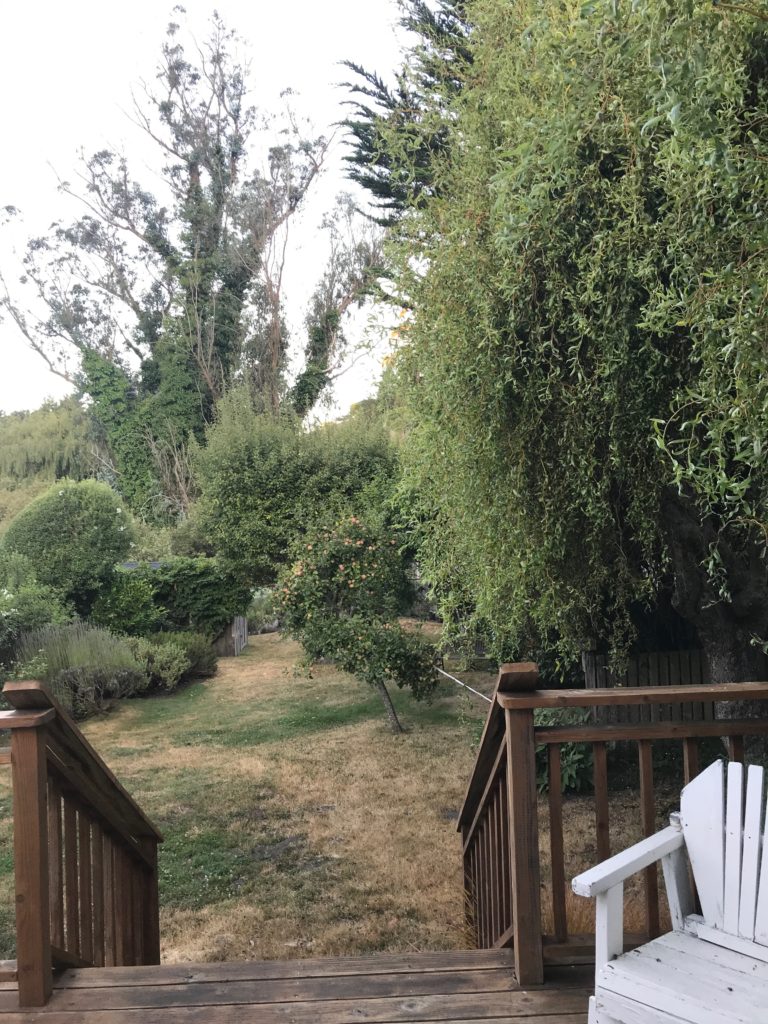
Although I am an urban dweller, part of me is a country mouse. A vacation is not necessarily a trip to another city, rich with historic sites, museums, and fine restaurants, but rather a sojourn in a quiet rural destination, preferably one with views, hiking, and a nearby body of water.

Recently, we stayed in such a place. Downtown Tomales (CA), population 204, has a post office, a bakery, a Town Hall, a small grocery, a deli, an antique store, and some real estate offices. Add in a hotel and a bar/restaurant, and that is it for the amenities. It is a town that people pass through on their way to other destinations. Yet it is so charming, homes near Tomales Bay can sell for millions of dollars, according to recent ads in the Pulitzer Prize-winning Point Reyes Light,.
The Tomales Post Office was established in 1854. True to the independent nature of the residents of Tomales, the post office still has the iconic glass-windowed personal mail boxes. This type of mail box is increasing difficult to find, having been replaced by standard metal-faced boxes in post offices throughout the country, including the neighboring Pt. Reyes Station Post Office, or the Inverness Post Office, on the west side of the Bay. It appears that there is no street delivery of mail in Tomales, although the ranches further to the east have curbside mail boxes.

Much of the land in western Marin County has been set aside in public trusts, to prevent development and preserve agriculture. As a result, as one skirts through the windy roads surrounding Tomales Bay, one sees miles of open space farm land, with picturesque barns and a few houses. The beauty of the pristine countryside has been preserved for all to enjoy through the Golden Gate National Recreation Area (GGNRA) and Marin Agricultural Land Trust (MALT).
In the generation before mine, over a quarter of the population of the U.S. was agrarian-based. Today, that number is less than 2%. My mother grew up on a dairy farm in Bellingham, WA, a place that was magical for me and my brother and our twelve cousins. We could walk to the country store, dig up sweet carrots and spicy radishes from the ground, and hide in the hay loft. We fed grain to the cows by hand, some of whom were named after us.
As children, when our vacation travels led to the farm, we slept in the dormitory-style open attic, on beds that our parents once had slept in. All of us cousins were readers, and we always had books. My grandfather, who was a high school teacher in addition to being a dairy farmer, was a collector of crystals and butterflies. A grandfather clock in the foyer helped us keep track of time. At the farm, we children were never bored.
West Marin has been a vacation destination for my family since the early 1970s. The country mouse part of me feels right at home here, just a couple of hours away from San Francisco, where the landscape turns rural. The Victorian-era farmhouse we recently rented for a few days is located on the two-lane State Highway-1. Just across the roadway, cows and calves grazed on the brown, dry grass. In the morning, I woke up to the sound of mourning doves cooing, songbirds singing, and calves bleating, in search of their mothers.
West Marin is farmland, as well as home to the beaches and hiking trails of the GGNRA, dotted with private dairy farms, creameries, and pastures of cows, sheep, and goats. Farming involves long hours and hard physical labor. Today, the average age of a dairy farmer nationwide is 57.5. In the Tomales area, however, because most of the farms produce organic milk, which realizes a higher profit margin than regular milk, many of the ranchers are young, in their 20s and 30s.

Behind our home rental, there is a secret garden, filled with roses, lavender, apple trees, and flowering, drought-resistant native plants. It is a bee and butterfly friendly garden, and these gentle creatures are abundant – white butterflies, golden butterflies with wide wings, honeybees, bumblebees, and colorful little moths. One evening, while enjoying a glass of wine on the sunny deck overlooking the garden, I noticed that a honeybee had landed in my glass, and was struggling to stay afloat. I was able to fish her out with my paper bookmark, hopefully before too much damage was done. Another honeybee fluttered nearby, as her friend staggered on the table. After a minute or so, the swimmer/imbiber appeared to recover, and both bees flew off, perhaps bringing an added new flavor to the hive.
Fresh honey is a special thing. Although the location the hives these bees inhabit is unknown, we are fortunate that our friend Fernando brings us fresh, delicious San Francisco honey from time to time. Honeybees can thrive in the city, as well as in the country.

The bees were not are our only visitors. One afternoon, a little brown bird hopped on the deck, perhaps looking for a handout. Judging from the holes in all of the grassy areas in Tomales, there appears to be an abundance of field mice and gophers. Overhead, raptors prominently fly through the sky, searching for a good meal. While hiking near Abbot’s Lagoon, on the west side of Tomales Bay, we came face to face with a startled doe. As she moved out of our path, two fauns came scampering down the hill, and the three raced away, quickly out of sight.
One does not need to go far in the San Francisco Bay Area to enjoy a semblance of country life. The beautiful landscapes of West Marin and West Sonoma Counties are easily reachable. Back home in the city, we have raccoons, skunks, and coyotes, as well as other urban/rural creatures. However, with two recent sightings of a mountain lion here in the western party of the city, perhaps it was the best weekend to be a country mouse.
Sources
Artifacts suggest Indians survived, kept traditions by Peter Fimrite, San Francisco Chronicle, Sept. 9, 2019
Golden Gate National Recreation Area (GGNRA)
Marin Agricultural Land Trust (MALT)
Wikipedia. Agriculture in the United States
Wikipedia. Tomales, CA
Wikipedia. The Point Reyes Light
Wikipedia. The Town Mouse and the Country Mouse
Young dairy farmers growing organically by Tara Duggan, San Francisco Chronicle, Sept. 9, 2019



